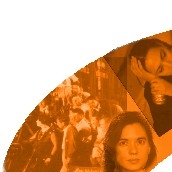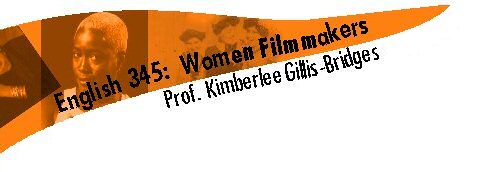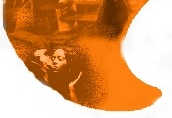


 |
 |
 |
 |
 |
| Course M-TH, 12:00-2:10 More 225 |
| Instructor K. Gillis-Bridges Padelford A305 543-4892 MW, 11:00-11:50 and by appointment |
| Page last updated 7/17/03 |

Class Handouts
All class handouts are in Adobe PDF format unless otherwise specified. To download the free Adobe Reader, click here. The handouts will appear in a new browser window. To return to this page, close the new browser window.
- Essay #2 Assignment and Guidelines
- Essay #2 Grading Rubic
- Essay #1 Assignment and Guidelines
- Essay #1 Grading Rubric
- Instructions
for Using E-Submit [HTML
Format] [PDF Format]
- Presentation Assignment and Guidelines
- Presentation Grading
- Presentation Topics
- Student Information Sheet
- Syllabus
Presentations will open in new browser window. To return to this page, close the new browser window.
E-Submit Direct Link
Sample Essays
- Sample Comparative Essays from Fall 2002 Women Filmmakers Course (Links will open in a new browser window. To return to this page, close the new browser window.)
- Becoming
A comparison of the transformations undergone by Cleo and Cher in Agnes Varda's Cleo from 5 to 7 and Amy Heckerling's Clueless. The writer argues that the characters become less self-obsessed, but become the objects of the male gaze. - A
Comparison and Contrast of Endings in Cleo from 5 to 7 and Blue Steel
An examination of how narrative, sound, and shots function to mark "a deliberate and dynamic shift in the female lead’s concept of self" in both films. - Deconstruction of Gender Roles in Blue Steel and Clueless
An analysis of how both films deconstruct gender roles. While the paper concentrates on female gender roles, it contains a brief examination of male roles in each film. - Constructing and Deconstructing Historical Truth
An investigation of how The Watermelon Woman and Boys Don't Cry reveal history as a construct. The writer uses Dunye's film as a lens to critique Peirce's film, but notes that a film like Peirce's may reach and impact a wider audience.